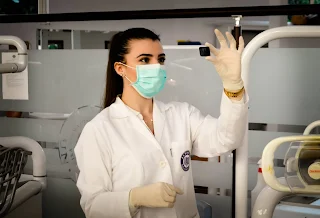Managing Sleep Disruptions During the Menstrual Cycle
The menstrual cycle is a regular physiological process in women of reproductive age, where the uterus prepares for pregnancy. Sleep, meanwhile, is a naturally recurring state essential for the body's recovery and well-being.
The Menstrual Cycle
The menstrual cycle typically lasts around 28 days and involves the release of hormones like estrogen and progesterone. These hormones regulate the cycle's phases: follicular, ovulation, and luteal phases.
During the follicular phase, estrogen levels increase, often leading to insomnia and lighter sleep. In the luteal phase, progesterone levels rise, promoting drowsiness and deeper sleep. Understanding these hormonal shifts can help manage sleep disruptions during the menstrual cycle.
Sleep
Sleep is a complex process, divided into rapid eye movement (REM) and non-REM (NREM) stages. Each stage plays a crucial role in the body's repair, from muscle restoration to cognitive recovery.
Sleep disturbances, such as insomnia or fragmented sleep, can occur due to hormonal changes during the menstrual cycle. Understanding these changes can help improve sleep quality and overall health.
Connection Between Menstrual Cycle and Sleep
Many women experience sleep disruptions before and during menstruation, often due to hormonal fluctuations. Sleep deprivation, in turn, can affect hormone levels, exacerbating issues like mood swings, fatigue, and menstrual irregularities.
Factors Affecting Menstrual Cycle and Sleep
Stress
High levels of stress can disrupt both the menstrual cycle and sleep patterns, leading to issues like insomnia or irregular periods.
Diet
A balanced diet helps regulate hormones and improve sleep quality. However, excessive caffeine or alcohol intake can disrupt sleep.
Exercise
Regular physical activity supports healthy hormone levels and better sleep. But over-exercising or sudden changes in routine may negatively impact both.
Tips for Improving Sleep During the Menstrual Cycle
- Create a soothing sleep environment: Keep your bedroom cool, dark, and quiet. Use comfortable bedding and avoid electronic devices before bed.
- Practice good sleep hygiene: Stick to a regular sleep schedule, avoid caffeine before bed, and engage in relaxing activities like meditation or reading.
- Take naps: Short naps during the day can help reduce fatigue and improve sleep quality during your cycle.
Further research is needed to better understand the menstrual cycle's effects on sleep and vice versa. Future studies may explore interventions like cognitive-behavioral therapy or dietary changes to enhance sleep quality.
In conclusion, understanding the relationship between sleep and the menstrual cycle is key to improving overall health. By addressing factors like stress, diet, and exercise, women can enhance both their sleep and menstrual health.










.jpg)